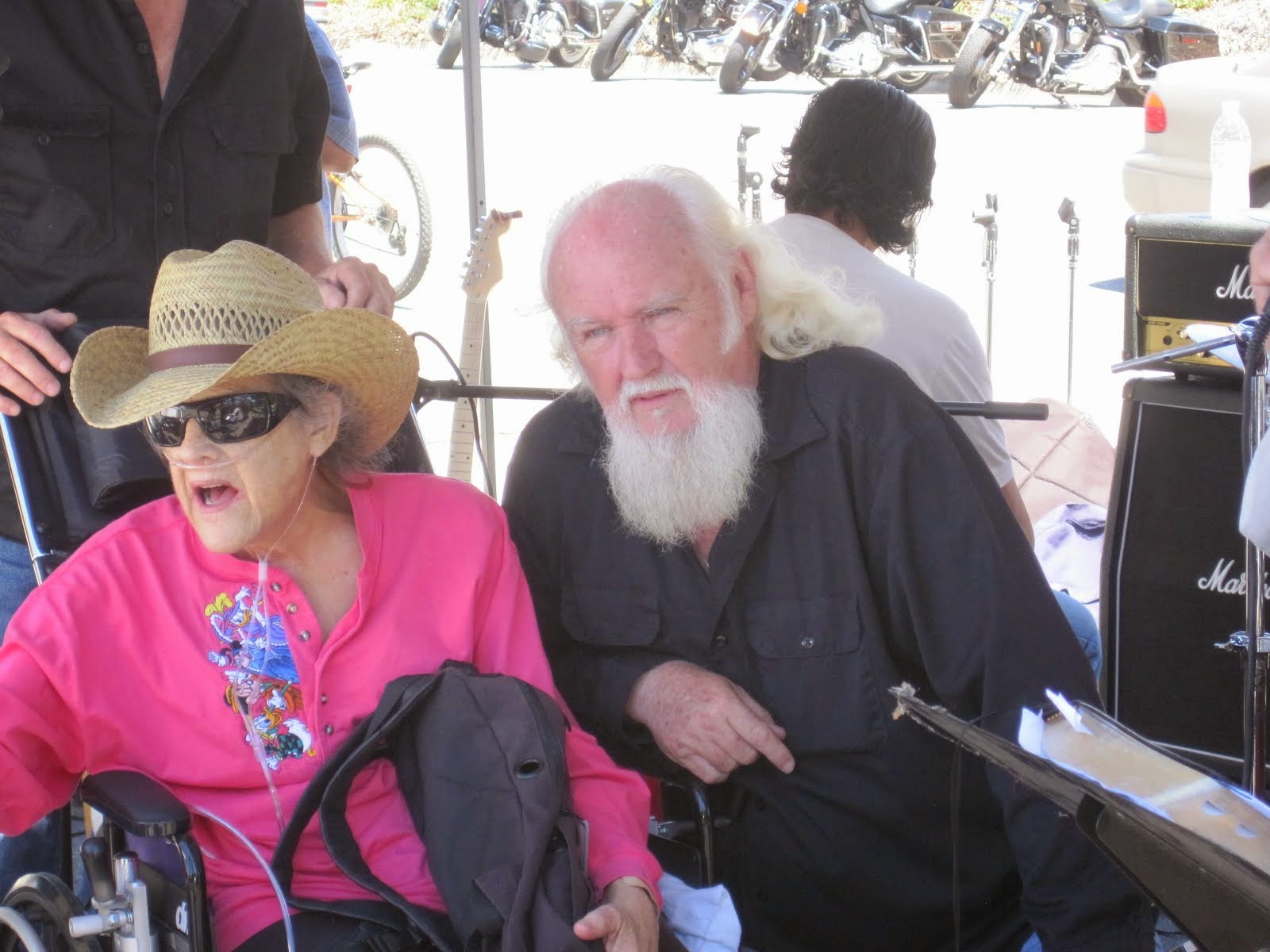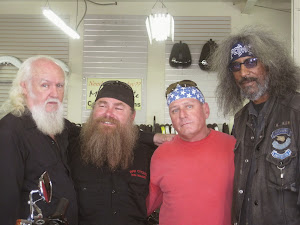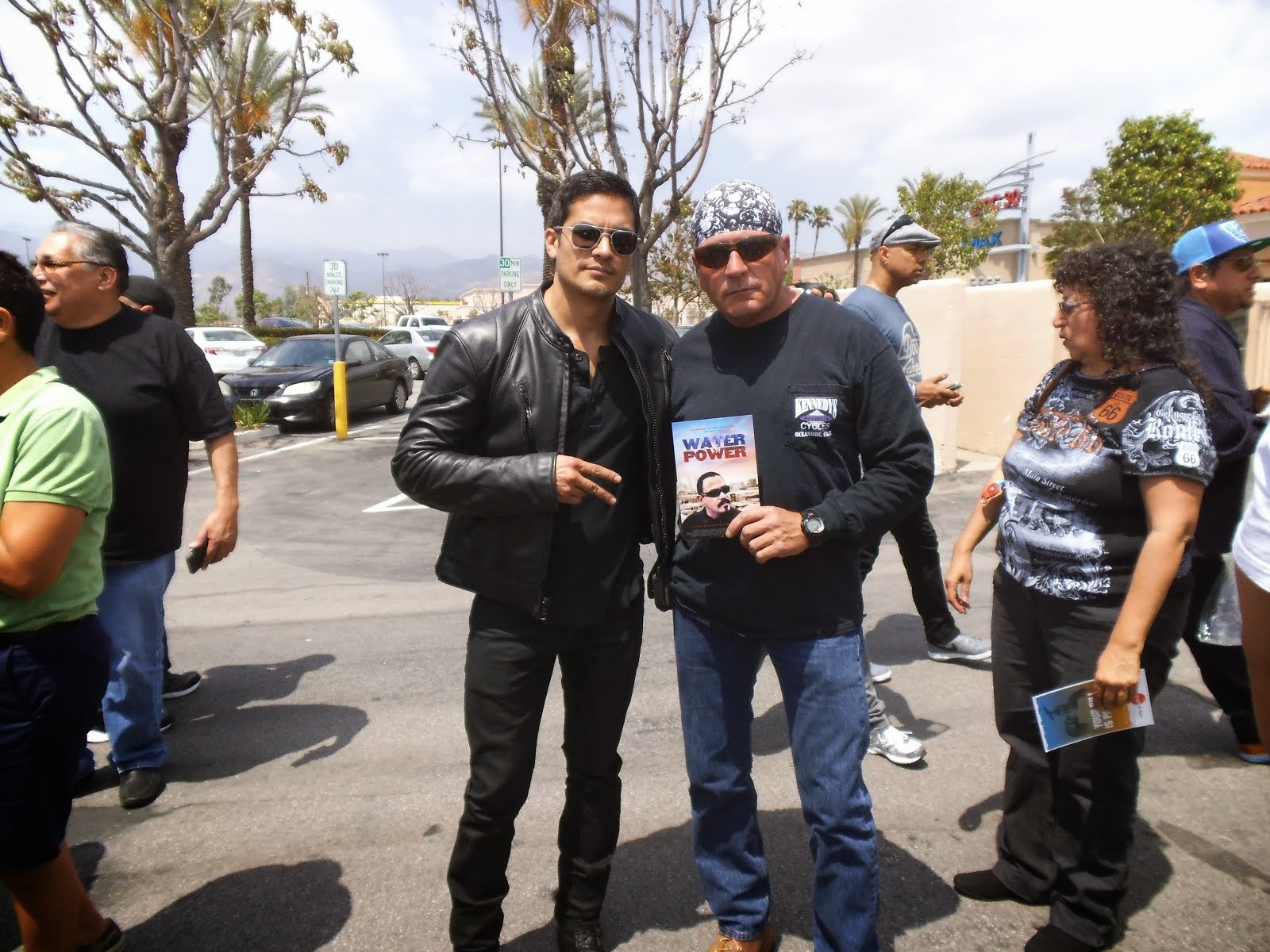OFF THE WIRE
http://www.businessweek.com/globalbiz/content/may2010/gb20100513_816646.htm The Return of Britain's Triumph Motorbikes Since its rebirth 20 years ago, the iconic maker of motorcycles used by Marlon Brando and Steve McQueen has become global and modern without losing its cool By Sarah Arnott
Related Items Ash Cloud Hits Travel Firms' Profits The Brown Paradox Bank of England Keeps Interest Rates on Hold The Crunch Took Its Toll, but British Business Is Set to Go Story Tools post a comment e-mail this story print this story order a reprint suggest a story digg this add to Business Exchange The Triumph factory smells of hot metal and petrolheads' dreams, the end of its production line stacked floor-to-ceiling with gleaming motorbikes in evocative colours like "tornado red" and "blazing orange."
But the iconic British brand popularised by Marlon Brando and Steve McQueen nearly didn't survive. "A lot of people said motorcycle production was dead in this country," says Tue Mantoni, the resurrected company's Danish-born chief executive.
"But we have proved we can survive and we can compete with the biggest brands out there."
It is quite a story: a 100-year saga of domination, decline and rebirth that is emblematic of the metamorphosis of British manufacturing as a whole. This year is the 20th anniversary of once-bankrupt Triumph's return to production. And with UK sales up by 26 per cent last year alone, there is much to celebrate at the factory tucked away on an industrial estate just outside Nuneaton. "We have gone from being a romantic heritage brand to being a serious contender in [the] global motorcycle market," Mr Mantoni says.
The company produced its first motorbike in 1902, and by the 1950s it was a world-leading motorcycle brand, seared into popular culture by Hollywood's bad boys. For nearly two decades, Triumph's dominance looked unassailable. But the Japanese were coming. Armed with better technology and more efficient production techniques, the likes of Honda (HMC) and Suzuki (SZKMF) stole the market.
"The British companies were complacent," Mr Mantoni says. "They assumed that people didn't want Japanese bikes, but in five years the whole industry was gone."
What followed is depressingly familiar: a 15-year soap opera of government-brokered mergers and de-mergers before what was left of the company finally collapsed in 1983. But Triumph clung to life. Plasterer-turned-building entrepreneur John Bloor bought the name and the drawings, and set about raising the phoenix from the ashes. It took nearly a decade to produce its first bike, but 20 years on, the relaunched company now has 1,400 employees across the world and sells 50,000 bikes every year through a network of more than 700 franchised dealers in 30 countries from Poland to Brazil.
It has been no easy ride. The designs bought from the collapsed Triumph Motorcycles (Meriden) were obsolete, and had to be re-created from scratch. But the biggest test came in 2002. One Friday afternoon, after staff had left for the weekend, a fire started in the factory's "rolling road" test facility. By midnight the plant had burnt to the ground, putting everything on hold for more than six months.
It was a time for soul-searching, says Mr Mantoni, who joined the company from the consultants McKinsey in the immediate aftermath of the disaster. "Sometimes you need that extra shock to say, 'OK, what do we want to do?'" he says. "We took the opportunity to carve out a niche for ourselves, to be really different from the Japanese."
The strategy seems to be working. Triumph's turnover has more than doubled, to £300m, in the eight years since the fire. It now accounts for 15 per cent of the key British market and 5 per cent worldwide. Partly, the group's success is a direct response to the mistakes of the past. "We learned from the 1970s that complacency leads to death," Mr Mantoni says. The competitive threat is Asia.
"We are a success now, but the Japanese manufacturers are always there, and the Chinese will come," Mr Mantoni says. "The Chinese have 25 to 50 brands now, but in 10 years there will be two or three that will be as successful as the Japanese, and we are watching that all the time."
In meeting the challenge, Triumph is the model of the small, developed-economy manufacturer: a niche brand with a reputation for high quality engineering, drawing on a carefully managed global supply chain. "
We get the best quality components for the most affordable cost, regardless of where they are in the world," Mr Mantoni says. "That is how we can be in this country and still be profitable."
The UK will always be Triumph's headquarters, he says, and all research, design and detailed engineering is done here. But engines and suspension systems come from Japan, commodity components from China, and top-quality bolts and washers from Germany.
The company also has a second factory, in Thailand, producing some components and assembling some finished bikes.
"The heart of the company is here in Britain – we have the biggest motorcycle design department outside Japan," Mr Mantoni says. "But without the factory in Asia we would not be in business today. We just would not be able to build 50,000 motorcycles and still be profitable."
Triumph has big plans, including the aggressive expansion of its model range. The biggest challenge is finding the necessary engineering skills – a familiar concern across British industry. Triumph wants to recruit up to 25 engineers in the next six months. But despite the strong aerospace and defence industries, good quality recruits are proving more and more difficult to find. "We have to interview 25 candidates for every one person we hire, and that ratio has got bigger and bigger over the last five years," Mr Mantoni says.
Just as the company looks elsewhere for the best-quality components, it may yet have to turn abroad for its designers. "The last thing we want to do is compromise, so the next step might be to go to Germany or other countries to see if they've got engineers we can hire."
Triumph may trade hard on its image of understated, unpretentious, authenticity. But its business practices are anything but traditional.
125 Years of Triumph
1885 Starts as a Coventry-based bicycle company
1902 Produces its first motorcycle
1953 Marlon Brando rides a Thunderbird 6T in The Wild One
1969 Holds 50 per cent of US market
1971 Parent group losses force sale
1977 Next parent collapses and workers' co-operative, backed with government money, becomes Triumph Motorcycles (Meriden)
1983 Triumph Motorcycles (Meriden) collapses, rights bought by entrepreneur John Bloor
1991 Reborn Triumph produces first motorbike
skip to main |
skip to sidebar




Bill & Annie

Art Hall & Rusty


NUFF SAID.......


































































OOHRAH

ONCE A MARINE,ALWAYS A MARINE

GIVING BACK


MOUNT SOLEDAD














BIKINI BIKE WASH AT SWEETWATER










FRIENDS





BILL,WILLIE G, PHILIP










GOOD FRIENDS


hanging out

brothers


GOOD FRIENDS

Good Friends

Hanging Out




Bill & Annie
Art Hall & Rusty
Art Hall & Rusty


NUFF SAID.......



















NUFF SAID......



























Mount Soledad




BALBOA NAVAL HOSPITAL
RUSTY DANNY

ANNIE KO PHILIP

PHILIP & ANNIE

OUT & ABOUT

OOHRAH...

OOHRAH
ONCE A MARINE,ALWAYS A MARINE

ONCE A MARINE,ALWAYS A MARINE
American Soldier Network GIVING BACK

GIVING BACK
CATHY & BILL
PHILIP & DANNY & BILL

MOUNT SOLEDAD
bills today
EMILIO & PHILIP
WATER & POWER
WATER & POWER
bootride2013



BIKINI BIKE WASH AT SWEETWATER







ILLUSION OPEN HOUSE

FRIENDS


GOOD FRIENDS



BILL,WILLIE G, PHILIP









GOOD FRIENDS

GOOD FRIENDS
Friends
- http://www.ehlinelaw.com/losangeles-motorcycleaccidentattorneys/
- Scotty westcoast-tbars.com
- Ashby C. Sorensen
- americansoldiernetwork.org
- blogtalkradio.com/hermis-live
- davidlabrava.com
- emiliorivera.com/
- http://kandymankustompaint.com
- http://pipelinept.com/
- http://womenmotorcyclist.com
- http://www.ehlinelaw.com
- https://ammo.com/
- SAN DIEGO CUSTOMS
- www.biggshd.com
- www.bighousecrew.net
- www.bikersinformationguide.com
- www.boltofca.org
- www.boltusa.org
- www.espinozasleather.com
- www.illusionmotorcycles.com
- www.kennedyscollateral.com
- www.kennedyscustomcycles.com
- www.listerinsurance.com
- www.sweetwaterharley.com

Hanging out

hanging out
Good Friends

brothers
GOOD FRIENDS

EMILIO & SCREWDRIVER

GOOD FRIENDS
Danny Trejo & Screwdriver

Good Friends
Navigation
Welcome to Bikers of America, Know Your Rights!
“THE BIKERS OF AMERICA, THE PHIL and BILL SHOW”,
A HARDCORE BIKER RIGHTS SHOW THAT HITS LIKE A BORED AND STROKED BIG TWIN!
ON LIVE TUESDAY'S & THURDAY'S AT 6 PM P.S.T.
9 PM E.S.T.
CATCH LIVE AND ARCHIVED SHOWS
FREE OF CHARGE AT...
BlogTalkRadio.com/BikersOfAmerica.
Two ways to listen on Tuesday & Thursday
1. Call in number - (347) 826-7753 ...
Listen live right from your phone!
2. Stream us live on your computer: http://www.blogtalkradio.com/bikersofamerica.
A HARDCORE BIKER RIGHTS SHOW THAT HITS LIKE A BORED AND STROKED BIG TWIN!
ON LIVE TUESDAY'S & THURDAY'S AT 6 PM P.S.T.
9 PM E.S.T.
CATCH LIVE AND ARCHIVED SHOWS
FREE OF CHARGE AT...
BlogTalkRadio.com/BikersOfAmerica.
Two ways to listen on Tuesday & Thursday
1. Call in number - (347) 826-7753 ...
Listen live right from your phone!
2. Stream us live on your computer: http://www.blogtalkradio.com/bikersofamerica.
Good Times
Hanging Out

Key Words
- about (3)
- contact (1)
- TENNESSEE AND THUNDER ON THE MOUNTAIN (1)
- thinking (1)
- upcoming shows (2)
Blog Archive
-
▼
2010
(4242)
-
▼
May
(300)
- The Truth about SB1070 and the New Arizona Law
- Minipulated News
- OFF THE WIREHONOR RECIPIENT, EL CAJON, CA, THURSDA...
- Outlaws club member pleads in drug investigation
- Sons of Anarchy: Season Two Arrives on DVD and Blu...
- ABATE LOCAL 6 Dates and info for the coming month
- “THE BIKERS OF AMERICA,THE PHIL AND BILL SHOW”
- MEcalm
- New York Motorcycle Club Shut Down
- 1,000 bikers rally, seek reforms in Ottawa Hills
- The Feds’ Illegal/Unauthorized/Murderous War on Bi...
- Biker Lowdown Radio Show Bike Night
- Ottawa Hills officer found guilty in biker shooting
- Ohio Bike Week ready to roar
- Highwaymen racketeering trial heads to jury
- Manville officials mull stricter regulations after...
- “Bikers Against Discrimination” Executive Director...
- Why Are Barney Phife Cops Being Outfitted With Ges...
- THAN YOU TO ALL U.S. SERVICEMEN/WOMEN WHO PAID THE...
- No title
- Run for the Wall: Veteran rides to D.C. to honor t...
- From the MASS AG's office regarding auto insurance
- Two Quick & Easy Cross-Examination Tips
- Advice for everyone..
- business meeting
- ABATE of Washington
- Sin City Crew need`s our help and support
- Action Alert: SB 435 - Motorcycle Smog Bill - Sche...
- Speculation about Charleston crash
- Motorcycle rally coming to Simpsonville
- Highwaymen lawyers, prosecutors clash in closing a...
- Hell on wheels?
- We Care Ride 2010
- Thoughts from Fran
- Readin', writin' and ridin'
- OF THE WIREhttp://editorial.autos.msn.com/blogs/au...
- The Fight Like A Girl Poker Run and Games Weekend
- Harley-Davidson Museum Hosts Evel Knievel Exhibit
- Press Release ABATE of Florida
- The Legendary Buffalo Chip to Host World Famous Ra...
- illegal video
- Sand on the road
- Two Quick & Easy Cross-Examination Tips
- "New York Rider - B.A.D. Day on the Mountain"
- Bike club ready for OC return during holiday
- recording in public
- EXCITING FULL THROTTLE NATION SHOW THIS WEEK!
- Helmets Can Save Your Life *Motorcycles Articles
- **Calvin Janisch recalled as having it all
- Run for the Wall coming to town
- ATTIKA is back at the Viper Room again June 11th.
- CHP highlights motorcycle safety *
- WASHINGTON DC:Rolling Thunder 2010 Memorial Day We...
- Breaking Bad: CA vs. the Other States
- Defective Helmet
- Simpsonville to add extra patrols for motorcycle r...
- 1,000 bikers rally, seek reforms in Ottawa Hills
- Hells Angels Jammin' with 81
- Motorcycle rally coming to Simpsonville
- Motorcyclists protest Quebec insurance hikes
- SB 435 scheduled for vote
- ALERT: California Volunteers Needed
- California vs Texas....
- NHTSA Update
- more motorcycle awareness messages
- Rolling Thunder means look out for motorcycles
- Australia - Second Time he has done this
- Myrtle Beach area officials lay out Bikefest plans
- Do You Know Where Your EPA Stamp Is?
- Highwaymen lawyers, prosecutors clash in closing a...
- Hell on wheels?
- Miami-Dade police hunt for driver in hit-run with ...
- RECALL:ADVANCED CARBON COMPOSITES EXT MOTORCYCLE H...
- Phil Horne has become quite a champion
- Janet Hogan says "THANKS !"
- Terrorist attack in Missouri
- New Details in Fatal Motorcycle Crash
- New York Freedom Riders New York Legislation and n...
- Randolph native and Vietnam veteran killed outside...
- Driver guilty in death of Haverhill couple on cycle
- Ohio Bike Week ready to roar
- Like minded thinkers!
- Motorcyclists Need To Raise A Stink When Cars Hit ...
- Motorcyclists gather in Mesa to raise awareness
- New Details in Fatal Motorcycle Crash
- Maryland Citizens Face Felony Charges for Recordin...
- Motorcycle rally will benefit troops
- Why Are Barney Phife Cops Being Outfitted With Ges...
- A mother’s nightmare
- No bail for men charged in officer's death Suspect...
- Make sure officer did not die in vain
- Slain police officer was trying to save his neighb...
- Motorcycle dealers grit teeth through bumpy downturn
- Keeping motorcycle safety on track
- Pocono Mountains Buffalo Soldiers Motorcycle Club ...
- Hot Leathers: Biker Rally at the Rock 3
- Moon's Custom Cycles closes in Ignacio
- B.C. appeal court sides with Hells Angel associate...
- Local BACA Members Make Big Impact
- Sin City Crew need our help and support
-
▼
May
(300)
Bikers of America, Know Your Rights!... Brought to you by Phil and Bill
Philip, a.k.a Screwdriver, is a proud member of Bikers of Lesser Tolerance, and the Left Coast Rep
of B.A.D (Bikers Against Discrimination) along with Bill is a biker rights activist and also a B.A.D Rep, as well, owner of Kennedy's Custom Cycles
